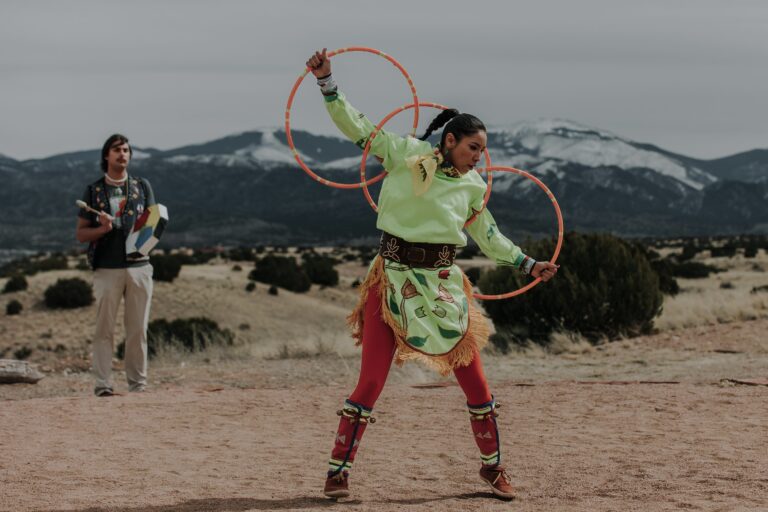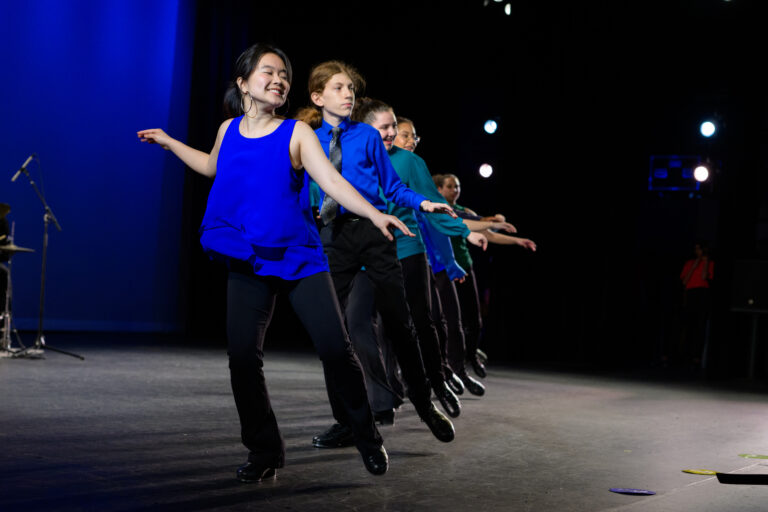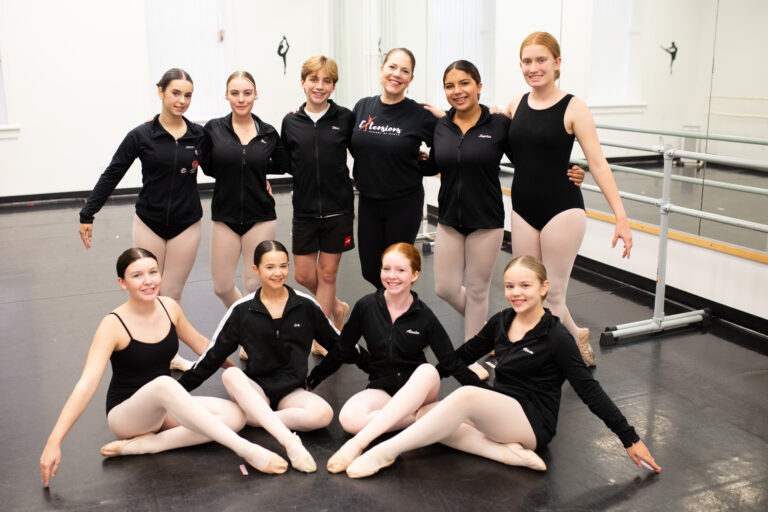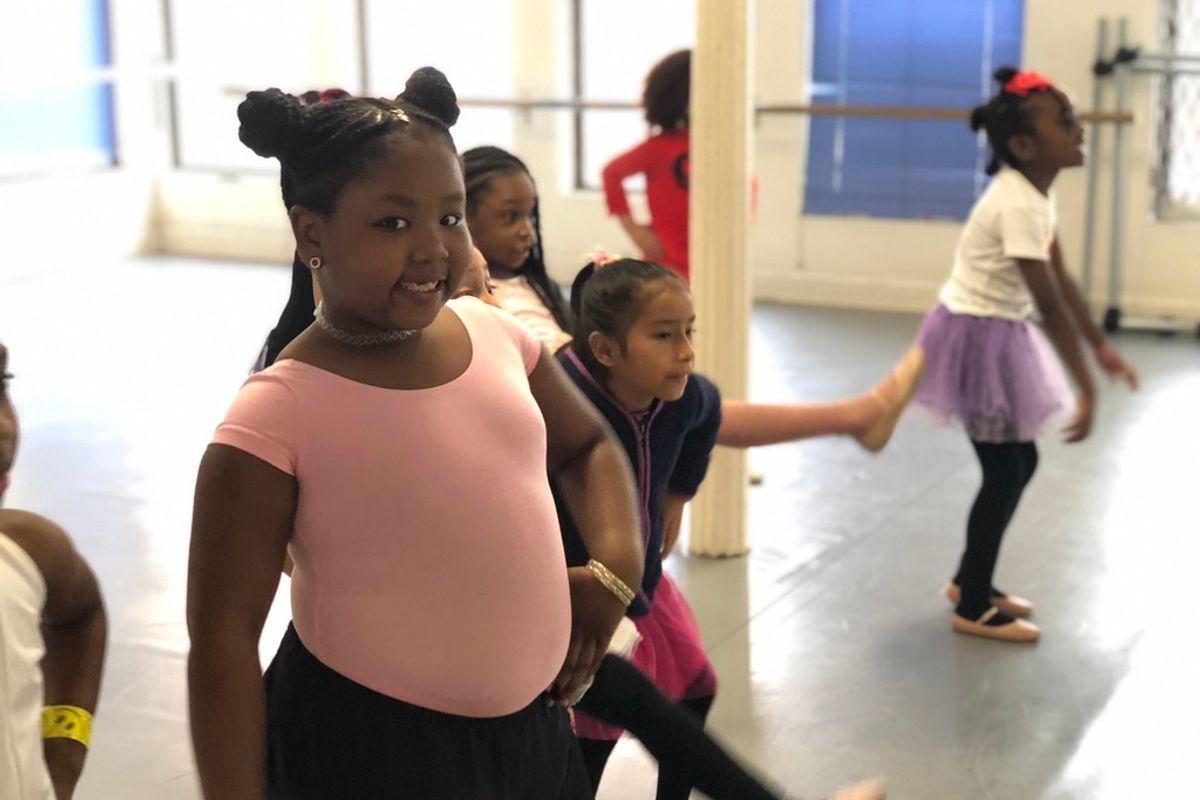
Look up buzzwords for 2020 and “pivot” is likely near the top of the list. It’s a word that, for much of the dance industry, has meant transitioning to a new virtual world for training and performances. Yet for Abby McCreath, the executive director of Groove with Me (GWM) in East Harlem, New York, a move to online classes didn’t go far enough to fill the changing needs of her studio community.
In June, after surveying the studio’s families to determine their needs, McCreath and GWM staff distributed bags full of items such as Children’s Tylenol, shampoo, batteries, peanut butter, mac and cheese, books—”things families can’t get at a food bank, and things you inevitably need at 11 pm,” she says. A lack of technology at home was also an issue; GWM supplied eight Chromebooks to students in need, and the plan is to have several more in the studio, once it reopens, for homework stations. “I want to have counselors and social workers available in the studio, along with tutoring and childcare, too, so parents can look for work. I want to serve food—that’s my fantasy. But most of all,” she says, “we need to be adaptable to our students’ needs.”
This pivot to become a support hub for the community during COVID is just one example of what makes GWM so special—and so necessary, despite an uncertain future due to the pandemic. GWM is not unique in its struggle as studios nationwide face a back-to-school season full of unknowns. Yet this kind of adaptability and willingness to take leaps is the way GWM has persisted for nearly 25 years.
Founded by McCreath in 1996, GWM provides free dance classes to more than 300 girls, ages 4 to 18, in East Harlem and the South Bronx—Black and Latino communities that were hit hardest by COVID-19. Over the years it’s grown into a large undertaking—the studio’s typical annual operating budget is $600,000, a figure McCreath and the GWM board must raise anew each year. Programming—in addition to its usual 42 weekly dance classes led exclusively by volunteer teachers—includes a “Teen Leadership Committee” for older students, as well as workshops for parents and sessions about nutrition, and self-defense. During the COVID-19 closure, McCreath added a website portal for college prep, job listings, activities for kids at home and resources from mental-health professionals.
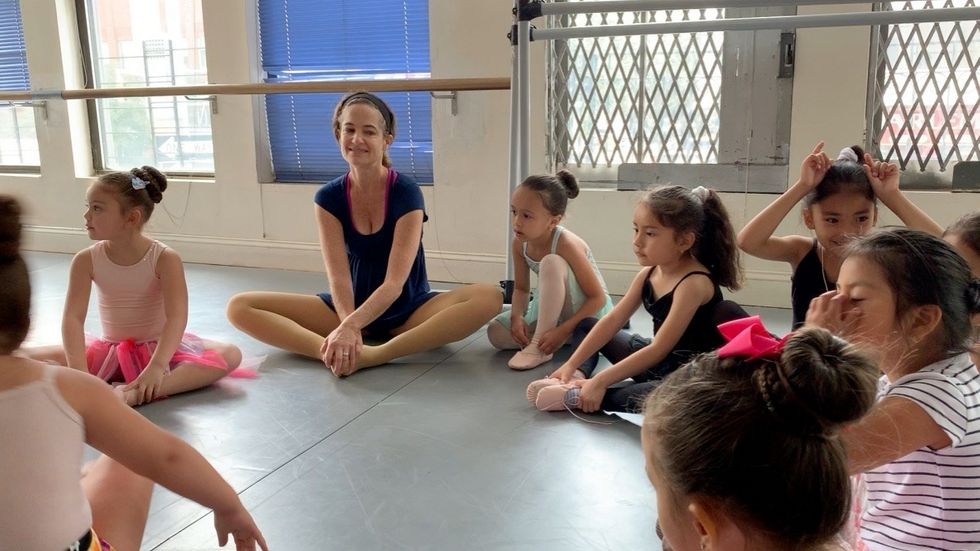
Courtesy Groove With Me
GWM’s original classes operated within a community center in Manhattan’s Lower East Side. By its second year, the program had expanded to 40 students with seven volunteer teachers, and McCreath needed her own space. She was hesitant to leave the students to whom she was committed, but the area was gentrifying, and rents were increasing. “My co-worker took me by the hand, showed me spaces in other neighborhoods and boroughs, and proved I could serve so many more people,” she says. GWM moved to East Harlem in 2001, and 200 girls signed up on the first day of registration.
The studio moved again in 2007 (this time just half a block south), but GWM’s place in the community had solidified. “I talk a lot about GWM’s physical presence in our neighborhood and how much weight that holds,” says program director Angelique Agudo, who grew up across the street from the current studio and took weekly tap classes as a teen. “Businesses are in and out, and there’s so much inconsistency not only in our neighborhood, but also in our students’ lives,” she says. “To have a monumental space like Groove with Me that continues to exist is transformative.” She also emphasizes the importance of a designated space for the students to feel safe in. “We have teens that come in at 3 pm but don’t have class until 7 pm, while others might have class at 4 pm but stay until 8 pm.”

Courtesy Groove With Me
Traditionally, GWM’s studio lobby is also a space for mothers to unwind or chat with one another. (Fathers are admitted into the area, but boyfriends or other men not recognized as primary caregivers are not.) “I started Groove with Me so focused on the students, but when we added a waiting room, I was surprised at how I became so attached to the girls’ families,” says McCreath. Since then, GWM added twice-weekly dance classes for moms, created a parent committee to increase involvement in the studio, and has offered parent workshops on immigration, nutrition, safety and finance. McCreath has made it a priority during the pandemic to touch base with these mothers.
Over time, GWM has received quite a bit of renown. “Today” host Hoda Kotb has been a vocal proponent of the organization, and GWM’s annual “Tap and Tapas” gala fundraisers have been frequented by stars like tap dancers Savion Glover and Jason Samuels Smith, as well as chef Tom Colicchio. Acclaimed postmodern choreographer Liz Gerring is entering her second year as a volunteer dance teacher. New York City Ballet principal Lauren Lovette, artistic chair of GWM’s board, led a virtual ballet class on Instagram Live this summer in an effort to draw attention to the school’s dire need for teachers.
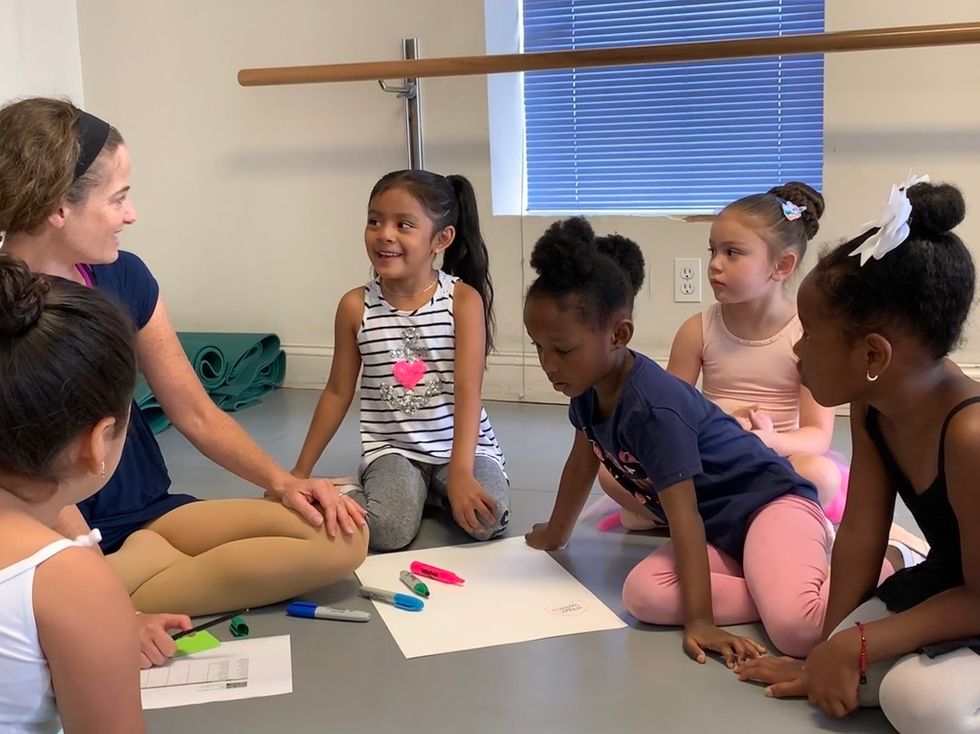
Courtesy Groove With Me
In a typical year, GWM relies on roughly 40 volunteer teachers. Many, like Gerring, hear about the studio through word of mouth, and want to get involved as an outlet for giving back. But, unlike Gerring, not all have Joyce Theatre residencies and choreographic fellowships under their belts. In fact, GWM teachers run the gamut from professional dancers and schoolteachers to recreational dancers and those who are simply inspired by the mission. GWM offers teacher training at the beginning of each year and arms its volunteers with basic behavior management skills and tools for handling sensitive topics that may come up in class.
“What amazes me about our teachers is how far they go, and how much they sacrifice,” says McCreath. “One woman stays until 8 pm despite having a two-hour commute back to Brooklyn. Others can barely afford to get there. But they all believe in our mission.” She admits, however, that not all volunteers are a good fit, and it’s okay to let them go. “But just because they’re unpaid,” she says, “that doesn’t mean they can’t be brought into the teachers’ lounge and offered direction. I’ve learned to ask what they need to be supported and to say, ‘Here are some skills that can help you.’ ”
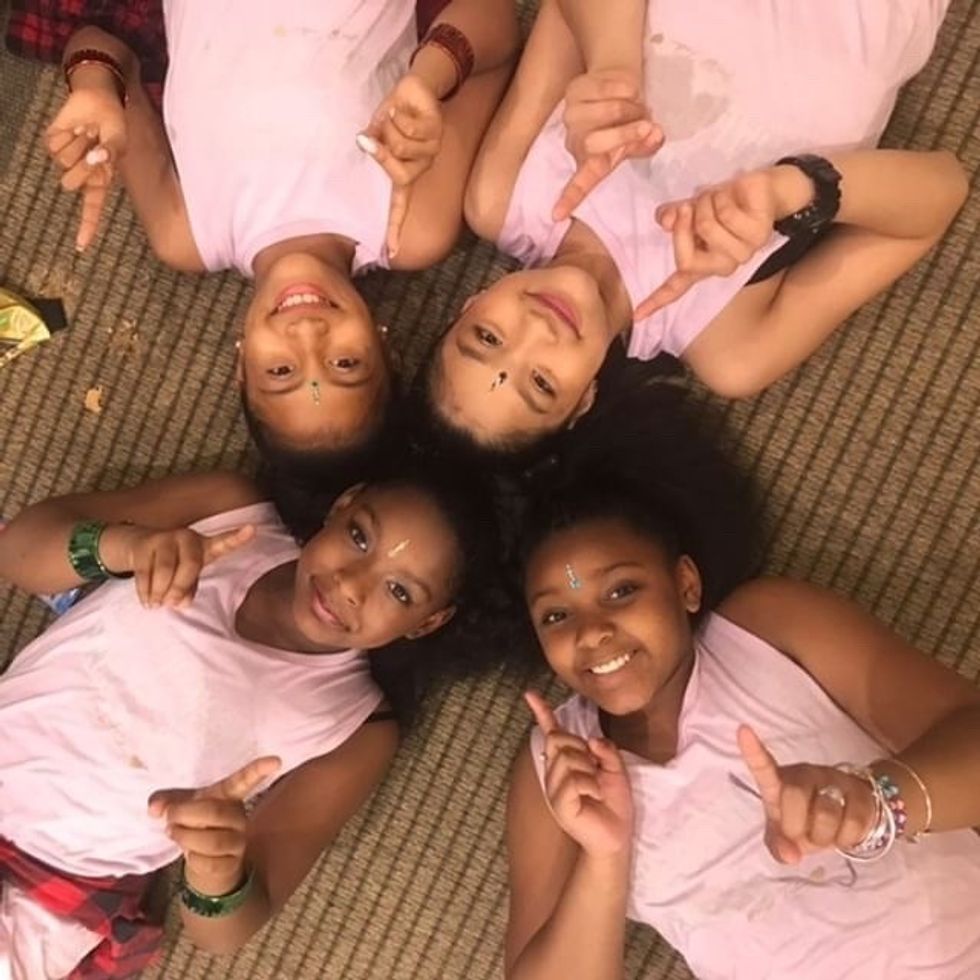
Courtesy Groove With Me
While some volunteer teachers have a decade-long history (or more) at the studio, it’s more common for them to stay only a few years. As a result of the pandemic, however, McCreath has seen more departures than normal. “A number have moved out of New York because they couldn’t make rent after losing work or because they are able to work remotely. And others may not be ready to get back on the subway or back in the studio,” she says. Moreover, when given the green light to further reopen and serve the full population, McCreath knows that additional classes will need to be added to the schedule to compensate for smaller class sizes—and that means even more teachers than usual.
Further compounding this is a rather mistimed opportunity for growth. In 2019, GWM was chosen by a team of architects (and endorsed by an area councilwoman) to occupy a new, 5,000-square-foot facility within a large high-rise. The studio fulfills a requirement for community space; other occupants will include a supermarket, a doctor’s office and low-income housing. Ready for move-in in April 2021, the new space will serve as a supplement to GWM’s current headquarters. McCreath had hoped early on that it would have been enough to house the entire operation, but with capacity capped at 75, that isn’t possible. “I refuse to tell a woman with a stroller to wait outside when it’s cold,” she says.
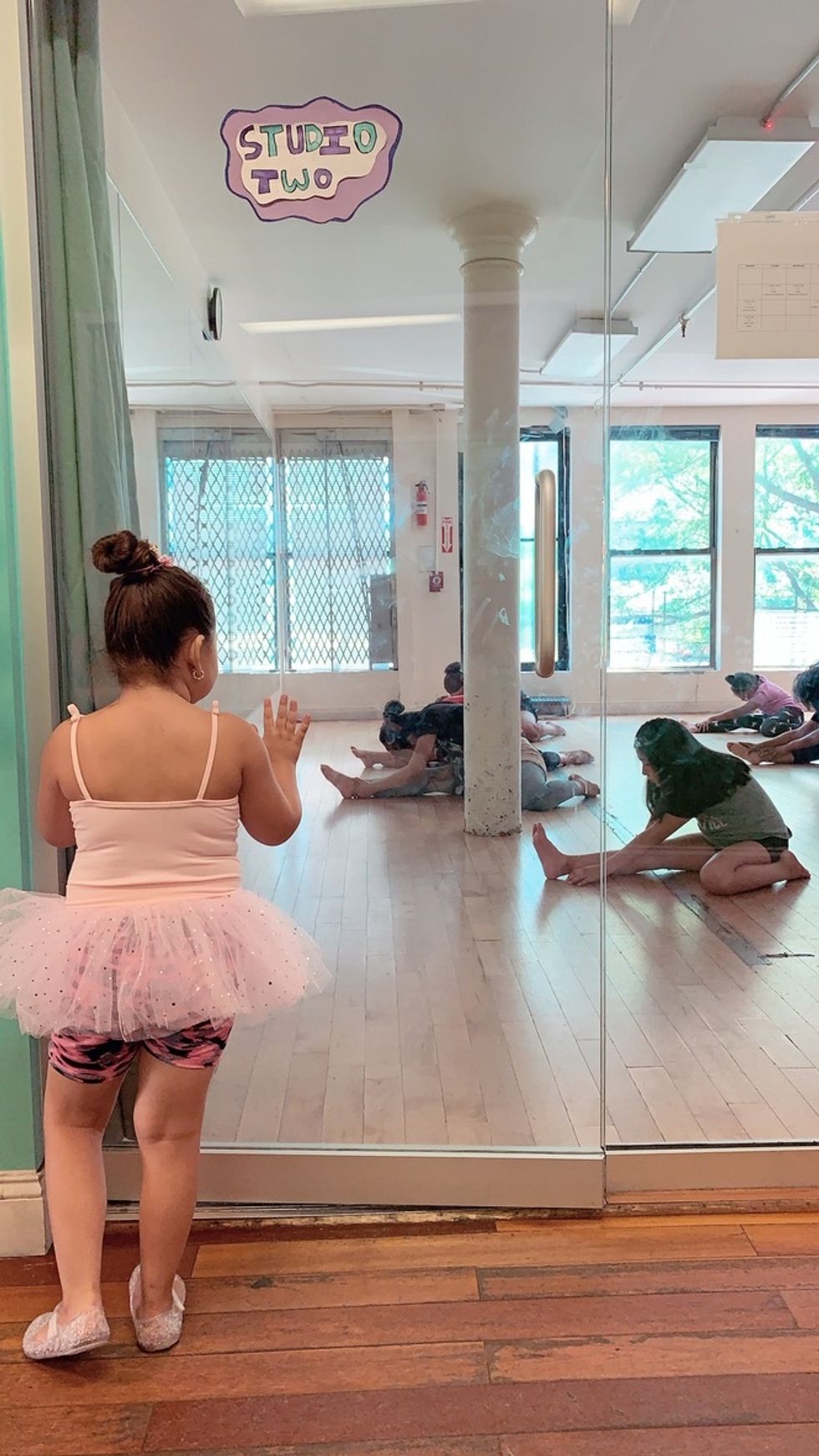
Courtesy Groove With Me
The new building comes at a significantly under-market rental rate, but will nearly double GWM’s funding needs for 2021. “We need $300,000 to build out the new studio, and, overall, it will cost $800,000 to run two studios,” says McCreath. “So in 2021 we’ll have to raise $1,100,000 to cover our total operating costs.” The numbers don’t scare her (“We always find the money,” she says).
The 2020 back-to-school season will be phased in gradually. GWM held registration on September 8 for girls ages 7 to 12, the studio’s target population. “Because of the limitations on class size and building capacity, we decided the fairest way to open in-person training was to do it one age group at a time,” says McCreath. Fourteen initial classes are on the schedule and the 84 students enrolled may participate in only one in-person class per week. It’s a fluid situation, one dependent on the students’ and families’ cooperation and willingness to abide by GWM’s safety protocols—and one that McCreath knows will be amended as time goes on.
In the future, McCreath sees GWM expanding services to include a full-day summer camp with lunch, math and STEM programming, and year-round adaptive dance classes specifically for students with disabilities. For now, though, it’s anyone’s guess as to when things will get back to a relative normal, and any silver-anniversary celebrations will be different than imagined. But McCreath remains steadfast in her founding vision. “When I was in high school, I had the privilege of being driven to dance, theater, pottery classes—outlets for expression and growth where adults were looking out for me,” she says. “That’s what I want to provide.” Agudo is equally passionate. “In times of great poverty, girls are the first to get lost. Groove with Me is needed now more than ever in our history, and we’re going to do it,” she says. “We’re going to grow, find new teachers, and shape-shift and figure out how we can best serve the community.”

